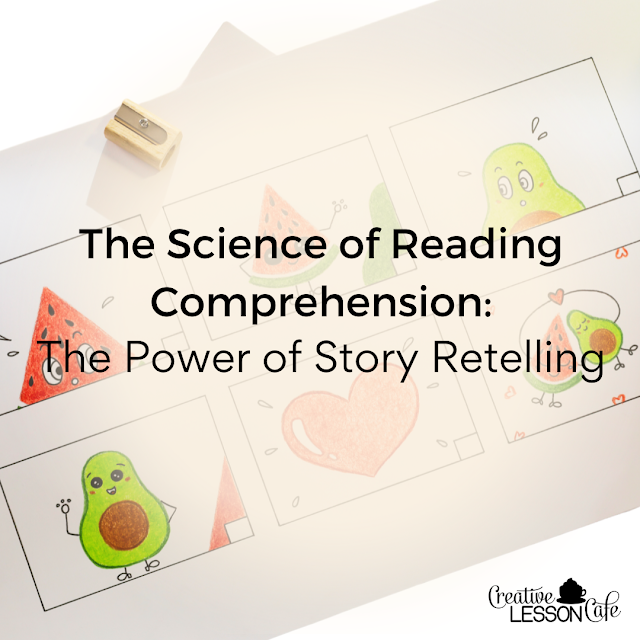As teachers, we are always trying to improve our teaching methods and provide our students with the best possible learning experience! In this post, I'll share the research behind the science of reading and highlight the importance of using story retelling as a strategy to boost reading comprehension. I'll also provide simple lesson examples that I LOVE, teaching ideas that REALLY work and CREATIVE classroom resources to help you put this strategy to use in your classroom too.
The Science of Reading: Insights for Teachers
Let's take a quick look into the science of reading and why it matters. Research in this area has given us important insights that can shape our teaching practices:
Decoding and Comprehension are Necessary: Reading isn't just about decoding words; it's about understanding the text. Effective reading instruction must address both decoding skills (identifying words) and comprehension skills (understanding meaning).
The Role of Story Retelling in Reading Comprehension
Story retelling involves students recalling and describing the main events, characters, and key details of a story they've read. Here's why it matters:
Active Engagement: Story retelling requires students to actively engage with the text.
Memory Enhancement: When students retell a story, they revisit the information, reinforcing their understanding and making it more likely that they'll remember it.
Synthesizing Information: Retelling requires that students synthesize what they've read. They must identify the main ideas and events, which is a crucial skill for summarizing and making inferences.
Vocabulary Development: During retelling, students naturally interact with and use vocabulary in context. This strengthens their word knowledge and contributes to better overall comprehension.
Connection Building: Story retelling encourages students to connect the text to their prior knowledge and experiences.
Lesson Examples and Teaching Ideas
1. Mini-Lessons: Start with mini-lessons on story structure, focusing on elements like characters, setting, problem, and solution.
Use popular picture books with clear storylines as examples.
Encourage students to identify these elements in the stories they read independently.
2. Read-Alouds: During read-aloud sessions, periodically pause and ask students to retell what has happened so far in the story.
Model effective retelling by highlighting key details and summarizing the main events in the plot.
3. Partner Retelling: Pair students up for retelling practice. This promotes peer interaction and allows students to learn from one another.
Provide guidelines and model examples of positive peer feedback.
4. Graphic Organizers: Use graphic organizers, such as story maps or sequencing charts, to help students structure their retelling. These visual tools guide them in organizing key story elements.
5. Written Retellings: Provide reading journals or writing papers where students can write or draw their retellings after reading a book. Sentence stems like first, next,...are helpful to young writers. This combines the benefits of writing and retelling, reinforcing comprehension skills.
6. Story Circles and Book Clubs: Create storytelling circles in the classroom where students take turns retelling a story to their classmates.
These task cards are a hit with teachers because they include a wide variety of discussion prompts that keep students engaged after reading.
During book clubs, encourage active listening and provide opportunities for students to ask questions or seek clarification from one another.
7. Visual Display Aids: Use visuals like storyboards or story sequencing cards to assist students in retelling stories visually. This approach is particularly beneficial for visual learners.
7. Visual Display Aids: Use visuals like storyboards or story sequencing cards to assist students in retelling stories visually. This approach is particularly beneficial for visual learners.
You can grab a free storyboard for your class to use with any book here.
Then, celebrate the remarkable growth in your students' reading comprehension skills.
Happy teaching!



No comments:
Post a Comment
Comments make my day!
Note: Only a member of this blog may post a comment.